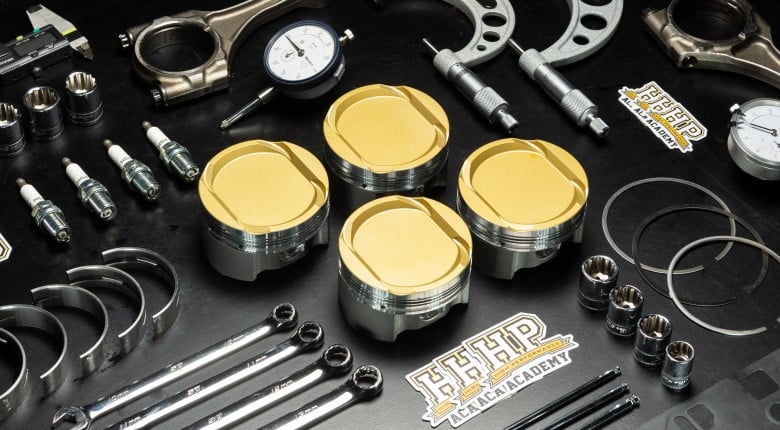When you are rebuilding a factory engine with a stock bore size or alternatively you are going to an oversize bore and fitting factory oversize pistons and rings, in most cases, the rings come pre gapped, meaning they are already set for the bore diameter so once installed, they are good to go. When you are fitting an aftermarket forged piston, however, you will most likely be working with file fit piston rings. In this article, you will read about how to select, measure and adjust your ring end gaps to help achieve a reliable ring seal.
In this article: How To Choose The Right End Gap | How To Measure Piston Ring End Gap | Adjusting Ring End Gaps | Optimising Your Piston Ring Gaps | Running In Your Engine | Conclusion
You may be wondering, why don’t aftermarket manufacturers simply supply piston rings to fit as you would get with a factory piston? This is to allow you, the engine builder, to select ring end gaps that suit your application. The idea with file fit rings is that you adjust the gap when the rings are at room temperature so that when the rings heat up and expand under operating conditions, the gap will be minimal but won’t risk the ends butting together. A minimal gap also means a minimal path for combustion gases to escape through into the crankcase which can result in a small increase in power, up to around 1-2% and also decrease oil consumption.
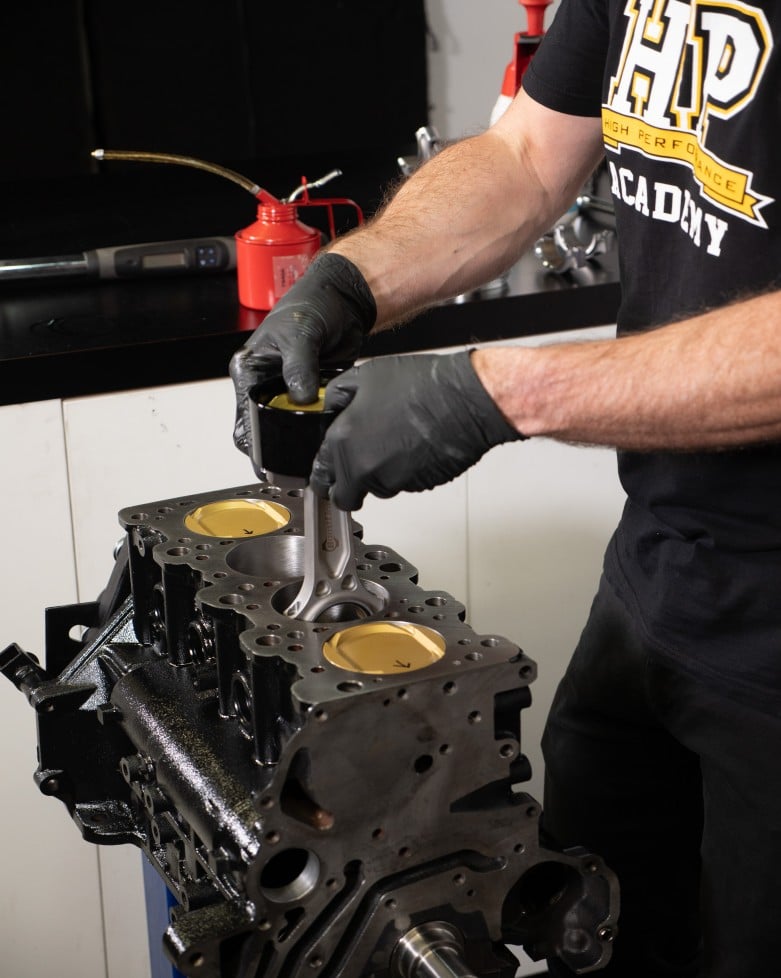
How To Choose Your Piston Ring Gap
When choosing your ring end gap at room temperature, you need to consider the amount of heat the ring will be exposed to and also the material it is made of or in other words, calculate the coefficient of thermal expansion. The amount of heat the rings will be exposed to will depend on your engine. A high boost turbocharged engine will obviously produce a much larger combustion event and hence more heat than a naturally aspirated engine and the combustion of pump gasoline will create more heat than an alcohol based fuel such as E85 or methanol. Of course, the amount of time you spend at wide open throttle will also be a factor here.
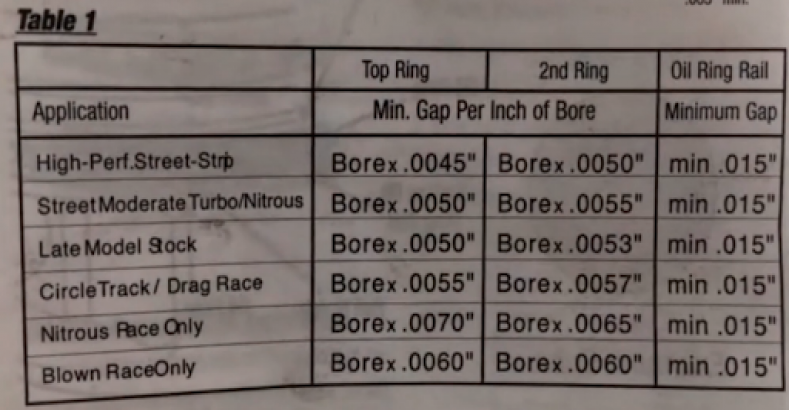
You won’t be flying completely solo when it comes to choosing your ring end gaps, the ring manufacturer will provide you with some recommendations like those shown above from JE for our Subaru FA20 piston rings. As you can see, for a high performance street/strip application, a minimum end gap of 4.5 thou is recommended so if we have a 3.386 inch bore, we multiply that by 0.0045 to arrive at our recommended end gap of 15.2 thou. With a figure like this, you would be best to decrease that to 15 thou as it is very difficult to work to more accuracy than 1/1000th of an inch. You might be thinking, shouldn’t I round up, not down but manufacturers always err on the side of caution to avoid rings butting in use and damaging their customer’s engines.
As you can see, the recommended end gap for the second ring is half a thou per inch of bore larger than the top ring which doesn’t initially seem to make much sense as the top ring is being exposed to more combustion heat and will, therefore, expand more than the second ring. It used to be that the accepted technique was to gap the second ring tighter than the top ring for this very reason. The change in technique was due to tests finding that if your second ring end gap was tighter than the top ring end gap, even with your top ring end gap set perfectly, you will still end up with some combustion pressure escaping past the top ring. If the second ring end gap is also tight, that pressure can build up between the rings, destabilise the top ring and reduce your ring seal. By having the second ring end gap larger, it allows this pressure to continue on its path through the bore.
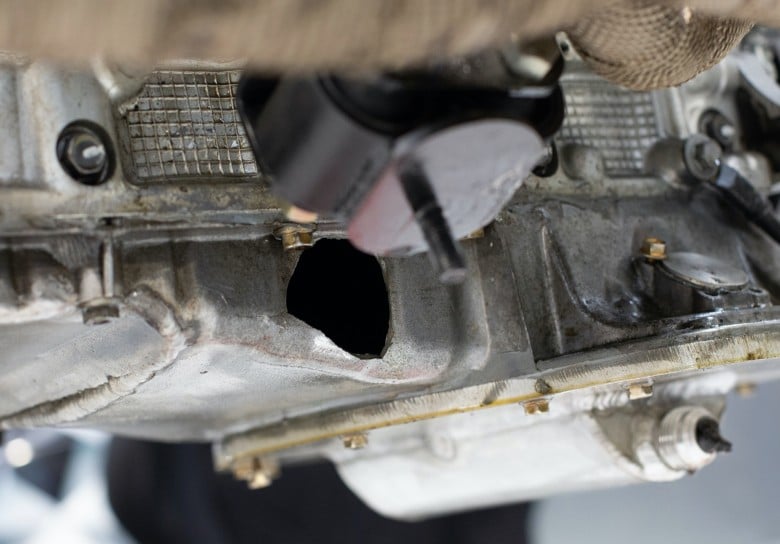
To summarise, you want to select the tightest ring end gap possible which minimises blow by, reduces oil consumption and increases horsepower. If you take this too far, however, the rings will butt together, possibly resulting in the rings seizing in the bore, which can damage the cylinder wall and rip the crown off the piston and in severe circumstances, the conrod will push the wrist pin out the bottom of the piston and then exit through the side of the block.
How To Measure Piston Ring End Gap
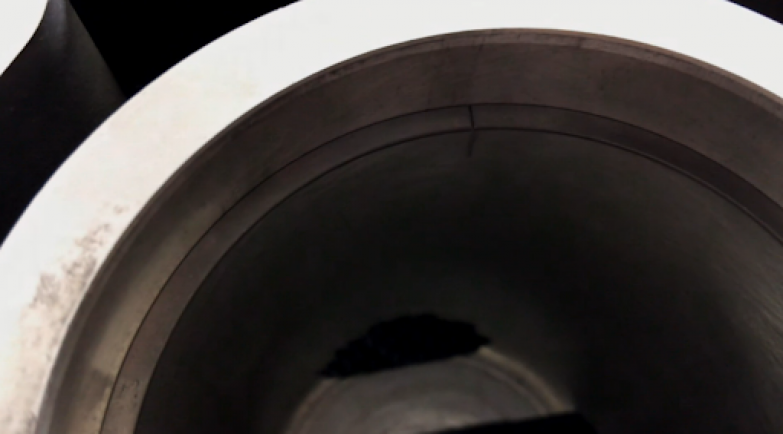
In order to measure your ring end gap, once the ring is located in the bore, you need to make sure that it is an equal distance down from the top on both sides or in other words, square. This can be done with a piston ring squaring tool which has little pockets that locate on the top of the bore and makes sure the ring is located squarely, the right distance down the bore. As well as measuring the ring end gap, you also need to take note of whether the ends are parallel to each other as if not, this will need to be taken into account when you adjust the ring end gap.
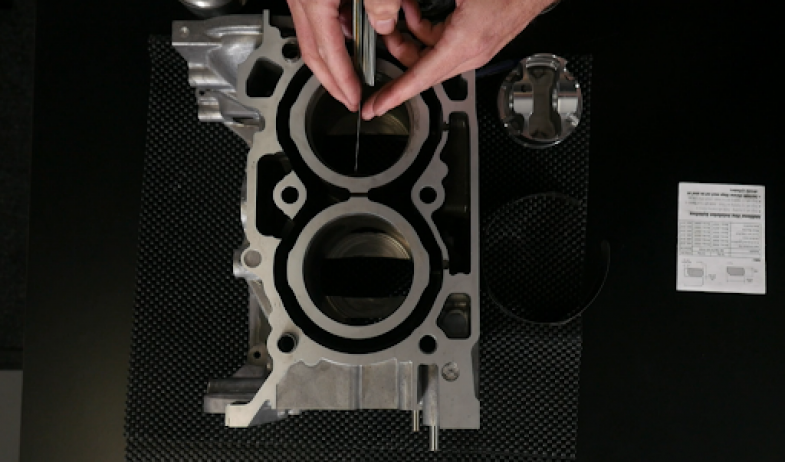
Once you have determined whether or not the gap is parallel, you can begin measuring it using a set of feeler blades and going up in size until you feel a small amount of tension, in our case, this occurred with the 14 thou blade. As we discussed, our ring end gaps need to be 15 thou so we will need to remove a small amount of material.
Adjusting Ring End Gaps
Adjusting your ring end gaps is done with a piston ring file and there are two options when it comes to this, manual or electric. If you’re only going to build one or two engines, it will be hard to justify the USD$300-400 expense of an electric ring file as a USD$40-50 manual ring file can still do a perfectly good job if used properly. If, on the other hand, you will be building multiple engines and perhaps even setting up your own shop, the cost of an electric file will rapidly pay for itself as it will provide faster, more accurate results.
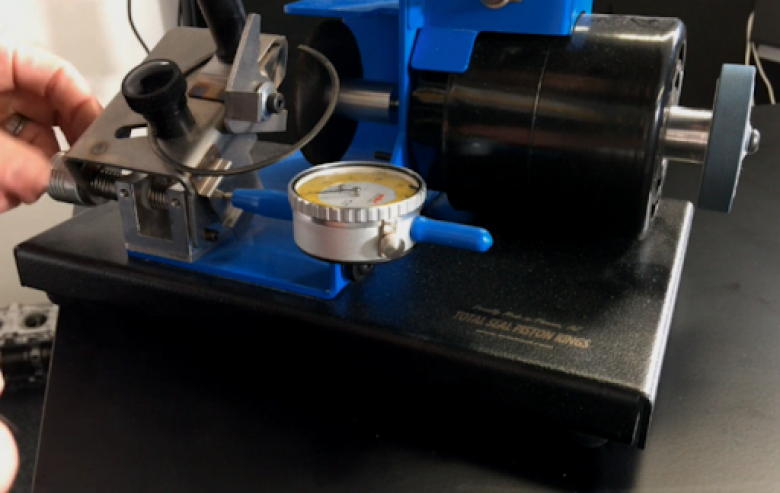
An electric ring file has a dial indicator which when zeroed before use, means you can be very accurate with how much material you are removing. It also has an adjustable stop that allows you to set the bore diameter you will be using and make sure you keep your ring end gaps parallel. This makes it easier to keep good consistency across all of your rings if you need to gap many for one engine. To begin removing material, you need to locate the ring in the file with the end protruding just past the table and then bring the ring down until it just contacts the grinding wheel. You then zero the dial gauge and start filing. Start by removing small amounts of material as not only will it avoid you having to purchase a new set of rings when you find you have removed too much, but you can damage the ring if you make large adjustments in one go.

If you opt for the cheaper manual ring file, you can achieve great results but there are a few things to keep an eye out for. Firstly, the handle that turns the grinding wheel can be turnt in either direction but you need to make sure you are grinding from the outside of the wheel to the inside. A lot of modern rings have an inlay on the outer surface so if you grind from the inside to the outside, the grinding wheel can grab and snatch that inlay off the ring. Another common mistake a lot of people make is to squeeze the ring together against the grinding wheel and grind both sides of the ring at the same time. By doing this, you will end up with an excessive ring end gap that will only be parallel when it is the same width as your grinding wheel.
Regardless of which option you choose, the process of removing material is likely to leave you with a small burr on the ring where you’ve ground it which needs to be removed before you install the rings onto the piston. This can be done by gently running a needle file against the edge of the ring, being careful not to create a chamfer. It should only take a couple of attempts to remove the burr.
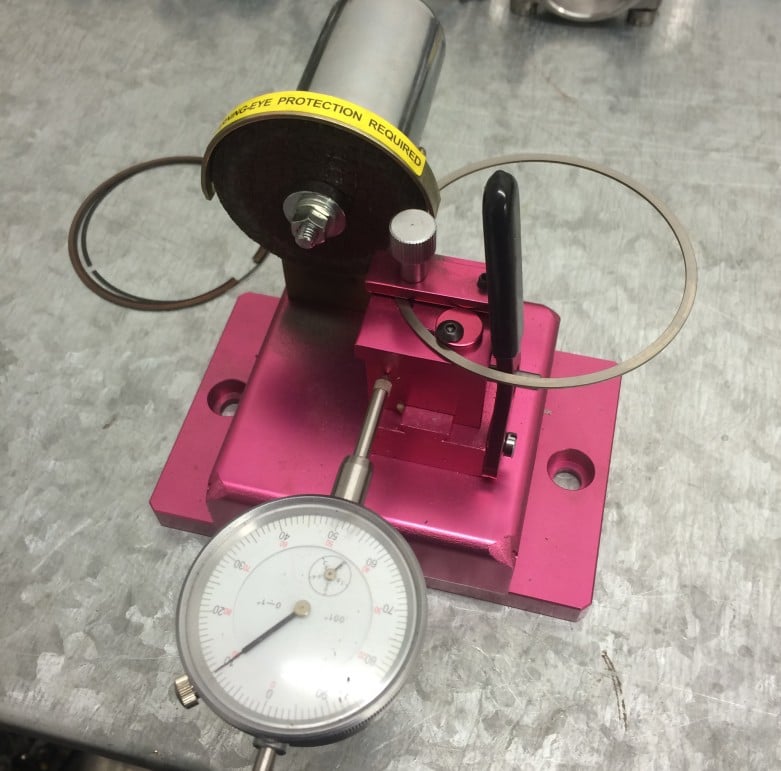
Optimising Your Ring Gaps
As we mentioned earlier, the ring end gap recommendations provided by the manufacturer are always going to be on the conservative side. There is nothing wrong with sticking to these but if you want to extract every last horsepower out of your engine, there can be an advantage that comes with adjusting and optimising your rings, particularly important if you are running in a controlled class where you are otherwise limited with what you can do to your engine.
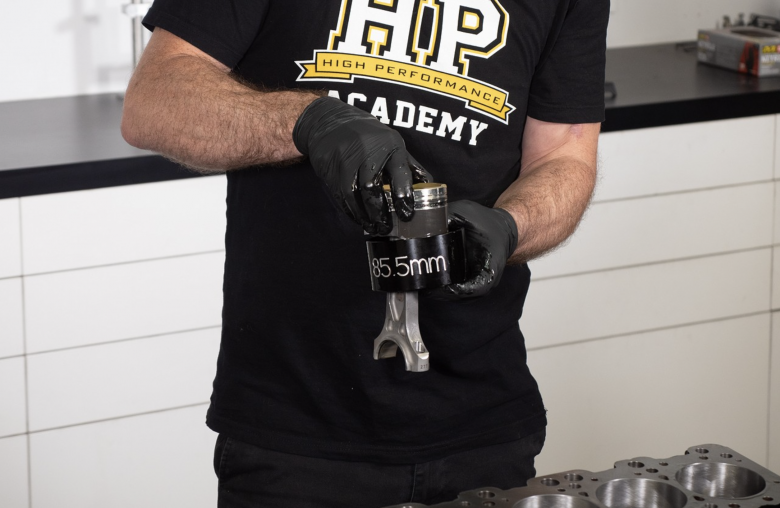
This can be difficult to do unless you see the same engine repeatedly as it comes back to be stripped down after being run hard. If you have this luxury, you have the opportunity to see what the ring end gaps look like and whether there is any potential to tighten them. Before the engine gets to the point of having the ends butt severely, causing a lot of damage, you will be able to see some more mild signs of this occurring. If your ring ends look polished, this is a clear sign that you went too far and would want to increase the end gap by a couple of thousandths of an inch. If, however, there is no polished appearance and you are willing to take the risk, you can rebuild the engine with a new ring set with slightly smaller end gaps. Over the course of a few engine builds, you can decrease the end gaps by 1/1000th of an inch each time until you arrive at the optimal gap for that engine.
Running In Your Engine
While not specifically related to your ring end gaps, the running in process is an important factor when it comes to achieving a good ring seal but there is a lot of misinformation out there. Many people think the idea is to run in the bearings against the crankshaft journals which of course is not the case as any metal to metal contact will result in engine damage that no amount of gentle running in will fix. There should instead be a film of oil protecting these components. What you are really trying to achieve is to bed the rings against the cylinder walls using the fresh hone pattern to grind down against the rings, making sure they are seated properly against the cylinder walls. With modern honing technique and rings, this is a process that is hard mess up but having said that, it is still a good idea to work through the process methodically.
When it comes to running in your engine, you will want to use a mineral based oil as some of the full synthetic oils on the market are so slippery that they can stop the rings from bedding in correctly. There are specific running in oils but in general, these are very thin and when running in a high performance engine, it is best to have the protection that a thicker, good quality mineral based oil provides.
When running in your engine, it is important not to baby it, you need to apply a moderate amount of load to force the rings out against the cylinder wall to ensure they bed against the hone pattern. You will, however, need to intermittently allow the rings time to cool down as the friction between them and the fresh hone pattern generates a lot of heat, cycling between 3000-4000 RPM and backing off the throttle works best. You actually have quite a limited amount of time in which to bed your rings before the hone pattern is smoothed out, about 85% of your ring bedding is completed in the first 100 kilometres and by the time you’ve got to 200 kilometres, the running in process is complete. After this, gently running in your engine will have no added benefit, you may as well get out and enjoy your car!
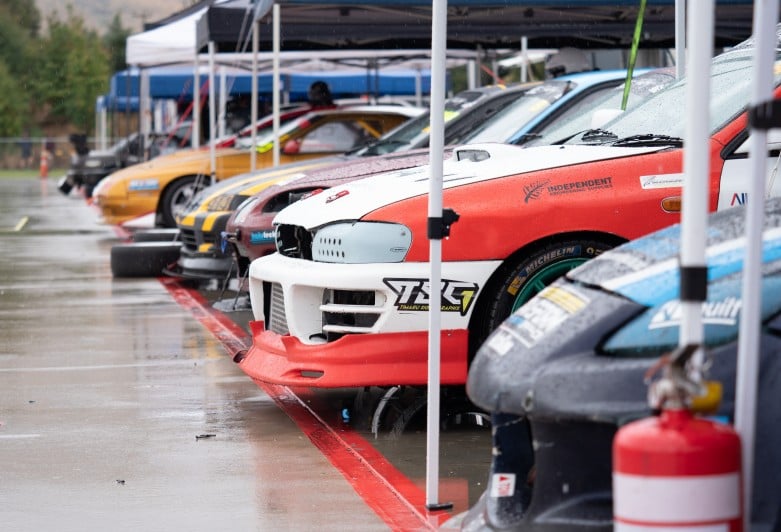
Conclusion
As you can see, selecting, measuring and adjusting your ring end gaps is a relatively simple process, particularly if you are sticking with the manufacturer’s recommendations. With a bit of care and precision, you can achieve accurately gapped rings to give you the peace of mind to go out and enjoy your car without the ring ends butting together.
if you want even MORE details on this topic, check out this webinar lesson below or dive into the next free engine building lesson. Claim your spot.
